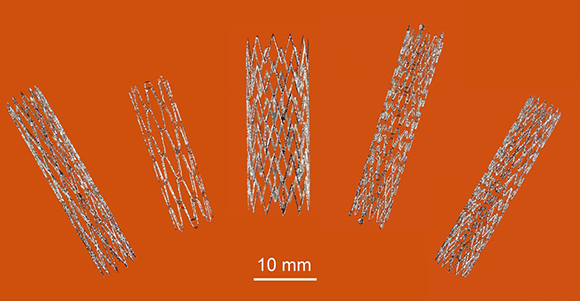CSIRO produces first AM nitinol stents for PAD patients
May 1, 2020

The Lab22 Innovation Centre within Australia’s Commonwealth Scientific and Industrial Research Organisation (CSIRO), Melbourne, Australia, reports that it has produced what are reportedly the world’s first customised additively manufactured nitinol self-expanding stents for PAD patients.
The need for customised self-expanding stents
Peripheral Arterial Disease (PAD) is a progressive disease caused by the buildup of plaque in the arterial system that carries blood to the arms, legs and vital organs. Approximately 10% of the world’s population is believed to have PAD, and endovascular stenting is commonly used in PAD patients because it’s minimally invasive and has shorter recovery times.
There are currently two types of metallic stents: balloon-expandable stents made from stainless steel or cobalt-chromium alloys, and self-expanding stents made from nitinol, a nickel-titanium alloy. Both are off-the-shelf products, and surgeons can select from various shapes and sizes of the tiny mesh tubes to suit their patients, but overall they are limited by the stents available.
CSIRO was contacted by an experienced vascular surgeon through Medical Innovation Hub (MIH) regarding the need for an improved product for treating patients. An opportunity was identified to develop a self-expanding stent that could be customised to suit individual patients.
Working with industry
CSIRO explains that specialist researchers in Lab22 have built many world-first biomedical parts with industry partners, including the first additively manufactured titanium heel implant and the first additively manufactured titanium sternum and partial rib cage.
Its team has now been exploring the feasibility of Additive Manufacturing nitinol self-expanding stents using Laser Powder Bed Fusion (L-PBF).Using this process to develop a nitinol stent was not without its challenges.
Nitinol is a shape memory alloy that displays superelasticity when stressed; its unique properties come from its crystal structure, which can change when stressed or heated. The alloy’s two distinct phases (martensite and austenite) are determined by temperature, and the phase transformation temperatures are extremely sensitive to the stent manufacturing conditions. For the stent to be self-expanding, the transformation temperature needed to be below body temperature, 37°C.
The L-PBF parameters for building the stent had to be suitably selected to fabricate the ultra-fine mesh structure of the stents, comprising fine struts of 80–200 µm in size. They also needed to be fine-tuned so that the desired phase transformation temperature of less than 37°C, could be achieved in the finished stent.
The results: a better patient experience and a superior product
According to CSIRO, using Additive Manufacturing technologies, clinically certified bespoke additively manufactured nitinol self-expanding stents can potentially be manufactured on-site within medical institutions, under the surgeon’s direction. The design freedoms offered by AM not only allow for the customisation of these stents to the specific size of a patient’s vessel proximal and distal diameters, but can also accommodate larger sized stents, cross branches and new shapes for proximal and distal vessels.
Additively manufactured nitinol stents thus offer the potential for customisation, inventory reduction (less inventory on the shelf) and resource efficiencies. For the patient, these special stents reportedly provide a better fitting device, better conformity to blood vessels and improved recovery time – equating to an improved patient experience.
















